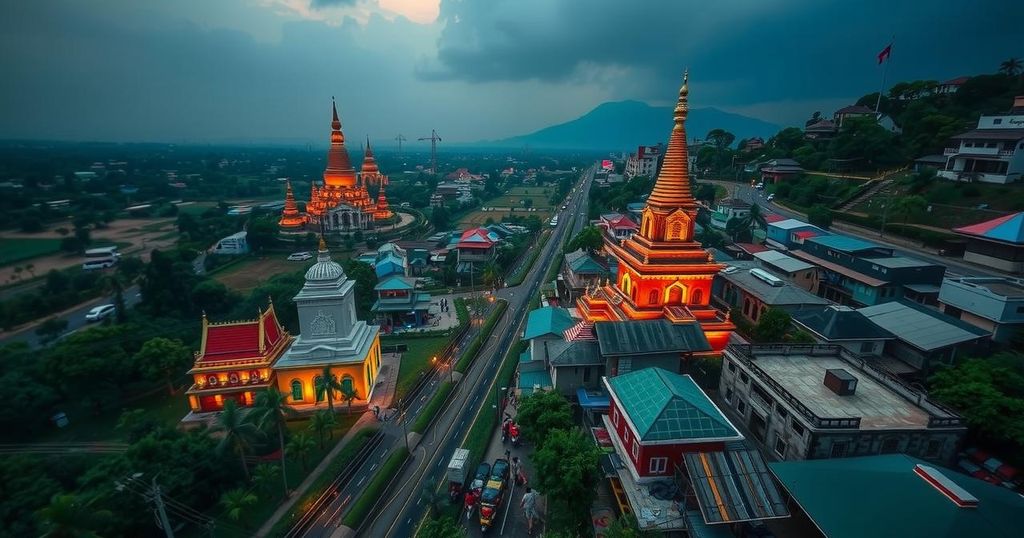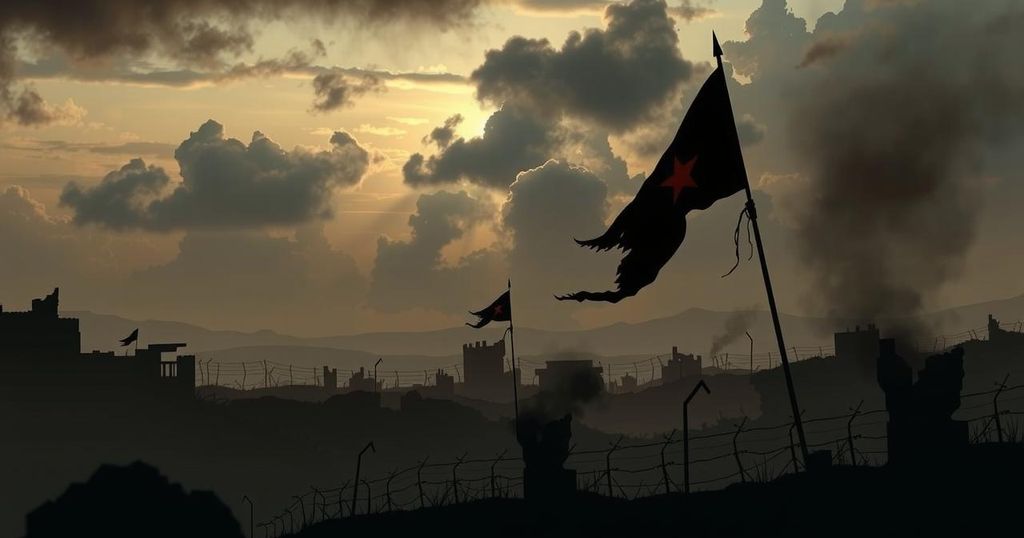The Impact of Operation 1027 on Myanmar’s Civil War Dynamics
Operation 1027, launched by the Brotherhood Alliance in October 2024, has shifted the dynamics of Myanmar’s civil war, highlighting vulnerabilities in the military junta. Key victories, including the capture of Lashio and other strategic towns, have compounded the junta’s challenges. Increased coordination among resistance groups and rising internal dissent within the military paint a picture of a regime struggling to maintain control amidst growing insurgent strength.
On October 10, 2024, Myanmar’s ongoing civil war significantly escalated with the commencement of Operation 1027, orchestrated by the Three Brotherhood Alliance (3BA), which consists of the Myanmar National Democratic Alliance Army (MNDAA), the Ta’ang National Liberation Army (TNLA), and the Arakan Army (AA). This operation has reshaped the conflict dynamics, especially in the northern Shan State and bordering areas with China, revealing the military junta’s vulnerabilities and altering the sociopolitical landscape profoundly.
The launch of Operation 1027 was a turning point, heralding a sustained offensive by the Brotherhood Alliance, which achieved a pivotal victory on August 3 when key insurgent forces overtook the headquarters of the Northeastern Regional Military Command (RMC) in Lashio, a strategically significant town. This loss was detrimental to the junta, as it compromised not only military command but also highlighted the rising capabilities of ethnic armed groups. The fall of Lashio disrupted critical logistics along National Highway 3, a vital route connecting Mandalay to China, marking a clear indication of the junta’s declining influence.
Following this victory, the Brotherhood Alliance intensified its focus on strategic targets such as Pyin Oo Lwin, home to important military installations, and additional towns including Muse, Hsipaw, and Kunlong. The capture of these locations further weakened junta control and underscored its inability to manage its territorial claims, particularly as insurgent strikes disrupted significant logistical routes. The loss of Laukkai, an essential military hub for the junta, reinforced perceptions of regime instability as military operations dwindled in the north.
Amidst these setbacks, it was revealed that several military personnel fled to India in late November 2024, indicating a notable decline in morale within the junta. Despite its losses, the regime retains control over major urban areas, including Yangon and Mandalay. However, the junta has struggled to reclaim territories lost to the Brotherhood Alliance, which has expanded its influence amidst a backdrop of increasing military engagements and internal disruptions. The junta’s reliance on fewer intensified airstrikes and artillery attacks has proved inadequate against the more agile insurgent forces.
A crucial aspect of Operation 1027 has been the unprecedented coordination exhibited by the ethnic armed factions. Historically fragmented, the alliance of the TNLA, MNDAA, and AA marks a significant development in their operational cohesion, allowing for more effective assaults against junta positions. The Brotherhood Alliance’s collaboration, coupled with support from the People’s Defence Forces (PDF) aligned with the National Unity Government (NUG), has enhanced the overall resistance capability and modified the conflict’s dynamics. However, certain rivalries, particularly between the TNLA and groups like the Kachin Independence Army (KIA), threaten the long-term viability of this unification.
As conflict intensity surged between June and August 2024, with recorded incidents climbing sharply, the military faced significant casualties, with a noted 42% increase among security forces. In response, the junta implemented measures to address soldier morale and prevent desertions, including strict surveillance and adjustments in compensation, yet the nature of the insurgency’s territorial growth suggests a waning military grip.
China’s role in this complex conflict has also grown more pronounced; its interests in the stability and economic connections through the China-Myanmar Economic Corridor (CMEC) keep it wary of a full junta collapse. Historically a supporter of the military regime, Beijing has been cautious in balancing its relations with ethnic groups involved in economic and illicit cross-border activities, opting to encourage peace dialogues.
As Myanmar’s civil war enters a new and uncertain chapter post-Operation 1027, the junta finds its position increasingly precarious in the face of a coordinated resistance movement that includes both ethnic groups and the PDF. While urban strongholds are maintained, the military’s fortitude is continuously challenged by a more unified opposition. The future trajectory of this conflict hinges on the junta’s adaptability and the political maneuvering of its integral ally, China, alongside internal resistance dynamics.
The ongoing civil war in Myanmar, which has seen a protracted struggle between the military junta and various ethnic armed groups, escalated with the launch of Operation 1027 in October 2024. This operation was spearheaded by the Brotherhood Alliance, which comprises three primary ethnic armed organizations that have previously operated independently. The conflict has revealed significant weaknesses in the junta’s control, particularly in strategic areas that are vital for military logistics and supply lines. Consequently, the shift in momentum has implications not just for internal stability but also for regional dynamics, particularly concerning the involvement of neighboring countries like China.
In summary, Operation 1027 has been pivotal in reshaping Myanmar’s civil war, fostering greater unity among ethnic armed groups and intensifying the junta’s vulnerabilities. Despite retaining control over key cities, the military faces increasing challenges due to defections and internal discontent. The role of China remains pivotal but ambiguous, influencing the conflict’s broader ramifications. As the situation evolves, the junta’s ability to adapt to the newly unified resistance and the complexities of international relations will significantly determine the future of Myanmar’s civil strife.
Original Source: www.borderlens.com







Post Comment